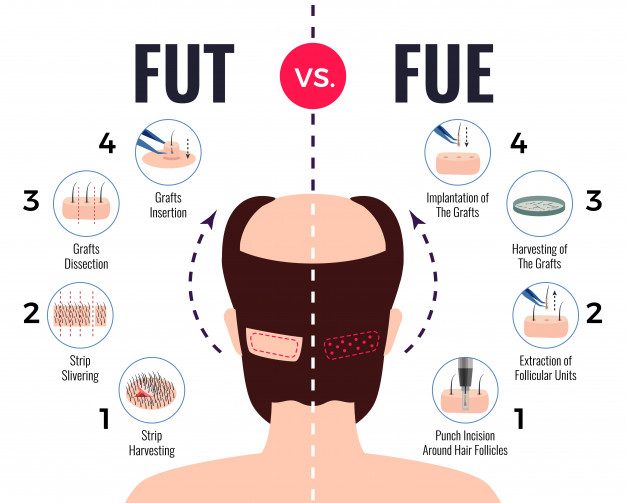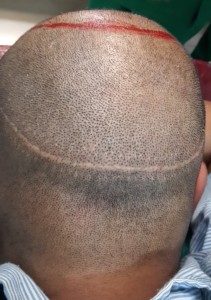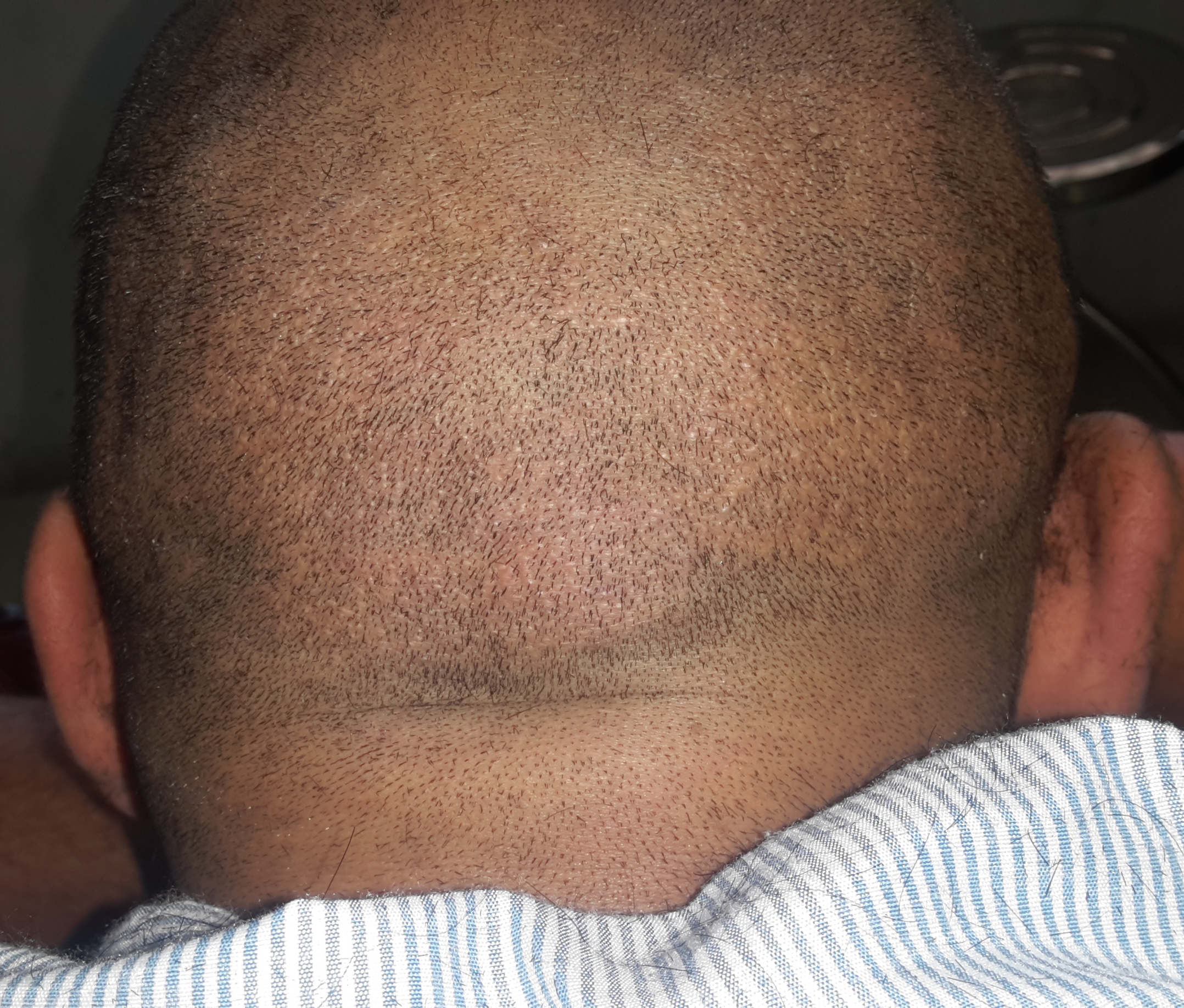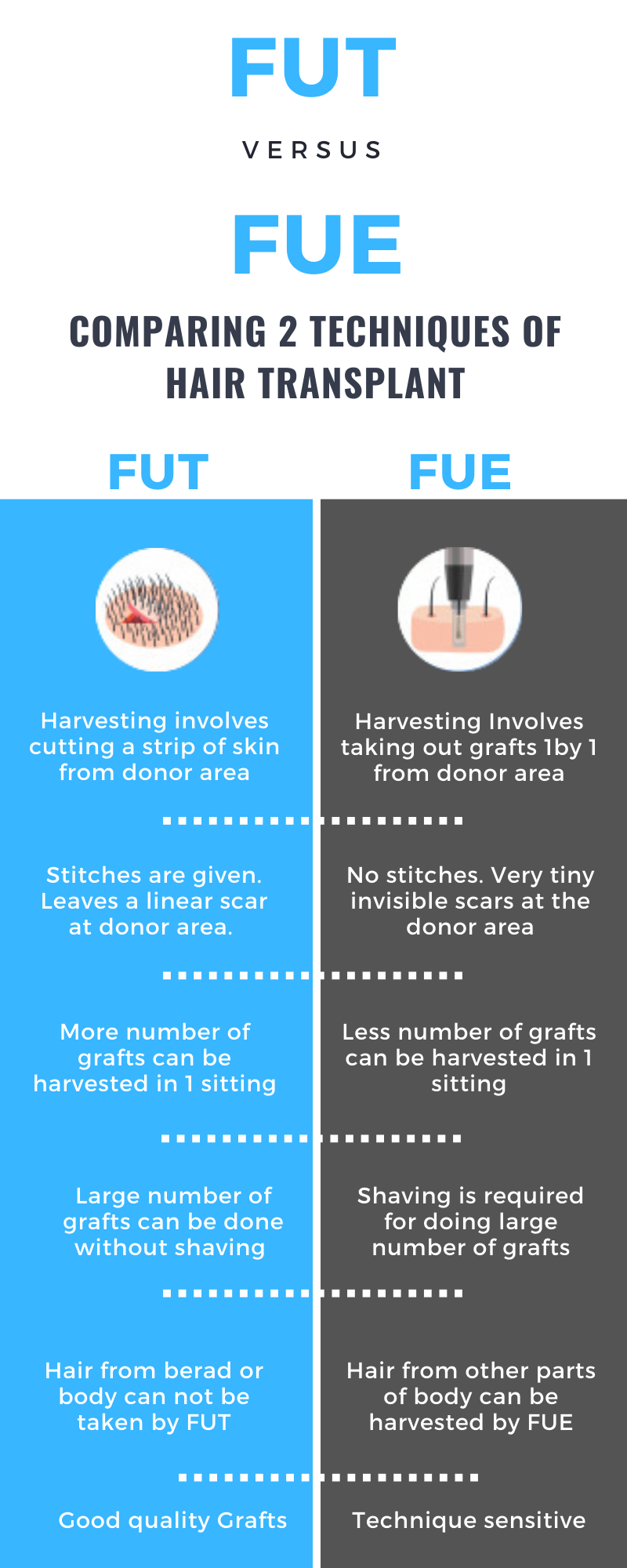FUT or FUE: Which technique is better for Hair Transplant?
FUT or FUE is a very commonly asked question by patients. Which technique is better?
A hair transplant is considered to be successful when it achieves natural looking hairline and good hair density without any signs of the treatment being noticeable. Over a period of years, technical progress has greatly contributed towards increased success and natural looking hair transplants. Now we are able to extract very small grafts allowing us to transplant more number of hair.
Difference between FUT and FUE technique of hair transplant
Hair transplant involves mainly two techniques FUT or FUE. The main difference lies in the way the follicle units are extracted.
In FUT, also known as the strip technique, a strip of the scalp with hair follicles is taken from the back of the head. These hair follicles are subsequently cut and recut to get desireextracted.
In FUE hair transplant technique individual follicular units are extracted directly from the scalp using a motorized punch.
The extraction or removal method is one of the most important and decisive factors in any hair transplant. The focus is not just on extracting as many grafts as possible, but also on the quality of the roots, as they play a decisive role in determining whether the grafting will be successful.
In FUE extraction method, the size of the punches play an important role. Choosing the right size of punch minimizes damage to the roots as well as the surrounding donor area. After extraction, the selected hair roots need to be carefully prepared. The second step ie their implantation, is common in both methods.
Parameter FUT FUE Scarring in Donor Area Strip extraction will leave a narrow linear scar on the back of the head Micro-scars looking like little dots which are invisible. Survival of Extracted Hair Follicles FUT grafts have good survival rate for extracted follicles FUE grafts are more technique sensitive because of less protective tissue around hair follicles. With the latest technology and skills of doctors survival rate of FUE follicles is same as that of FUT. Number of Grafts and Density Dependent on the size of the area to be treated, 1000 – 5000 follicular units are required most of the times. For covering small bald areas, FUE is recommended whereas for covering large bald areas either FUT or FUE or a combination of both FUT and FUE is recommended. The desired hair density of 30 – 90 FUs per cm² can be achieved by using any one or a combination of both techniques. Implanting the Grafts The implanting method for both FUT or FUE is same. Healing Hair Loss/Shock Loss One often very unpleasant effect for patients, occurring independent of the method used, is the hair loss in the transplantation area that occurs 2 – 6 weeks after the operation. This affects mainly the transplanted hairs, but may also affect existing hair. In the course of the second or third week after a hair transplant, most of the transplanted hairs fall out. This effect happens to 98 % of patients.
This hair loss is completely normal. Patients need to know that it is only hairs weakened by the transplantation that are falling out. By contrast, the hair roots remain in place, gathering strength and producing new hairs after 3 – 6 months, evidence of the success of the hair transplant. So basically shock loss is temporary and fallen hair will grow back.
Scar of FUT Technique of Hair Transplant
Scars of FUE Technique of Hair Transplant
FUE or FUT: Which method should be used in my case?
Both techniques FUE hair transplant and FUT have very good success prospects, but: there is no one best or right method – usage of extraction method entirely depends on your expected hair density, number of follicles to be transplanted, availability of donor hairs, hair density in the donor area etc.
The decision about which extraction method is good for you should be individually weighed up in consultation with the hair transplant surgeon. Our surgeons will help you understand the pros and cons of both techniques, applicable in your case and they will help you select the method that will produce great results for you.
FUE is best for patients wanting to avoid a linear scar at all costs, and for younger patients only requiring minor hair loss treatment. Moreover, FUE is the right choice when transplanting body hair or when corrective / reconstructive hair surgery is involved. FUE is also good for patients with (very) little donor hair, as well as for patients with a tendency to extreme scarring or patients wanting to wear their hair very short.
Patients with a Norwood V or VI diagnosis should choose a combination of FUE and FUT to attain the highest possible number of donor hairs. The hair density needing to be achieved (30 – 90 FUs per cm²) is possible with both techniques, meaning that the selected extraction method has no appreciable influence on the end result.






